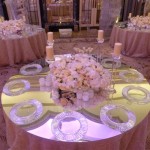How To Make Homemade Mirror Frames
Creating custom mirror frames offers a rewarding way to personalize home decor and showcase individual style. This process allows for complete control over the frame's design, materials, and finish, resulting in a unique piece perfectly suited to its environment. Whether aiming for a rustic, modern, or ornate aesthetic, building a frame from scratch presents an accessible project for various skill levels.
The initial step involves accurate measurement of the mirror. Precise measurements are crucial for ensuring the frame fits snugly and securely. Measure the mirror's length and width, recording the dimensions carefully. These measurements will determine the dimensions of the frame's components.
Material selection significantly influences the frame's final appearance and construction process. Common choices include wood, metal, and composite materials. Wood offers classic versatility, allowing for carving, staining, and painting. Metal provides a sleek, modern look and can be shaped and welded for intricate designs. Composite materials offer durability and resistance to moisture, making them suitable for bathrooms or outdoor spaces. The material chosen should complement the mirror's style and the surrounding decor.
Once materials are selected, the next stage involves cutting the frame pieces. For wooden frames, a miter saw ensures accurate 45-degree angle cuts for clean corners. Metal frames may require specialized cutting tools, such as a metal saw or grinder. Composite materials can often be cut with standard woodworking tools. Regardless of the chosen material, accurate cutting is essential for a professional-looking finished product.
Joining the frame pieces requires careful consideration of the chosen material. Wood frames can be joined using wood glue and reinforced with nails or screws. Metal frames may require welding or specialized adhesives designed for metal bonding. Composite materials often utilize adhesive bonding or mechanical fasteners. The joining method should provide sufficient strength and stability to support the mirror's weight.
After assembling the frame, finishing adds the final aesthetic touch. Wooden frames can be sanded smooth and stained or painted to achieve the desired color and finish. Metal frames can be polished, painted, or patinated to create various effects. Composite frames might require minimal finishing, depending on the material's inherent properties. The chosen finish should complement the mirror and surrounding decor, enhancing the overall aesthetic.
Attaching the mirror to the frame requires a secure and stable method. Specialized mirror adhesive, often available in hardware stores, offers a strong bond. Alternatively, small clips or brackets can be used to secure the mirror within the frame. The chosen method should consider the mirror's weight and the frame's material to ensure a safe and lasting attachment.
Adding decorative elements provides an opportunity to personalize the frame further. Consider adding embellishments such as molding, trim, or decorative carvings. These additions can enhance the frame's visual appeal and create a more intricate design. The choice of decorative elements should complement the frame's overall style and the surrounding decor.
When working with wood, preparing the surface through sanding is vital for achieving a smooth finish. Sanding removes imperfections and creates a uniform surface for staining or painting. Different grits of sandpaper are progressively used, starting with coarser grits and moving to finer grits for a polished result. Proper sanding ensures the final finish adheres evenly and enhances the frame's overall appearance.
Selecting appropriate adhesives is crucial for ensuring the frame's structural integrity. Wood glue is commonly used for wooden frames, while specialized adhesives are available for metal and composite materials. The adhesive chosen should be compatible with the chosen materials and provide a strong, durable bond. Proper adhesive application ensures the frame remains securely assembled.
Protecting the finished frame with a sealant adds a layer of durability and resistance to environmental factors. Sealants can protect against moisture, dust, and scratches, preserving the frame's appearance over time. Choose a sealant appropriate for the frame's material and finish. Applying the sealant according to the manufacturer's instructions ensures optimal protection and longevity.
Hanging the finished mirror requires appropriate hardware and consideration of the wall material. Picture hangers, D-rings, or wire hanging systems can be used, depending on the frame's weight and size. Ensure the chosen hardware is rated for the weight of the mirror and frame. Proper installation ensures the mirror hangs securely and safely on the wall.
Exploring different frame styles and designs provides inspiration and allows for customization. Researching various frame profiles, finishes, and decorative elements can spark creative ideas and help determine the desired aesthetic. Consider the existing decor and the mirror's style when choosing a frame design to create a cohesive and visually appealing result.

20 Fantastic Diy Mirror Frame Ideas A Cultivated Nest

30 Diy Mirror Frames Scratch And Stitch

How To Make A Diy Bathroom Mirror Frame Thediyplan
:max_bytes(150000):strip_icc()/alahome1-a879d69e31be4a9a9ae522028c12926d.jpg?strip=all)
20 Diy Mirror Frame Ideas To Inspire Your Next Project

Easy Diy Stick Framed Mirror That Looks Expensive

Diy Gold Frame Mirror Made Of Cardboard

Diy Reclaimed Wood Mirror Frame Montreal

How To Build A Mirror Frame Simple Woodworking

30 Diy Mirror Frames Scratch And Stitch

How To Build A Mirror Frame Diy Ideas Glass Doctor








